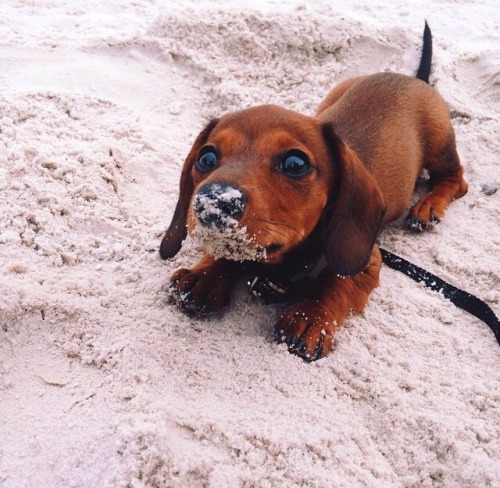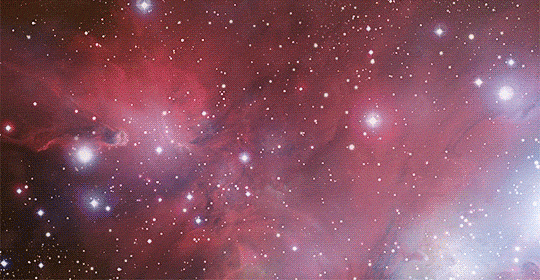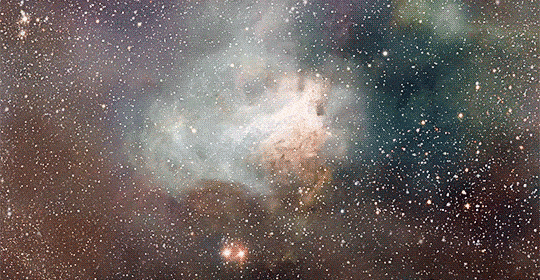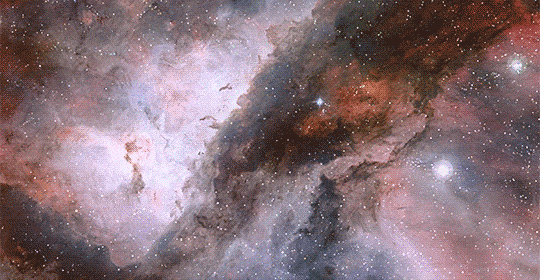F-22 Raptor With A Launch Of The Space Shuttle In The Background.

F-22 Raptor with a launch of the Space Shuttle in the background.
More Posts from Lanas-own-blog and Others


Hundreds of you sent in questions for my live conversation with three astronauts and NASA’s chief scientist on Tuesday. Thanks! The most common question was: “What happens when you get your period in space?”
I didn’t end up asking this question because
a) the question itself has a lot of historical baggage b) the answer is pretty boring
But because people seemed genuinely curious, I decided to answer it here.
First, a bit of history…
In the early days of space flight, menstruation was part of the argument that women shouldn’t become astronauts.
Some claimed (1) that menstruation would effect a woman’s ability, and blamed several plane crashes on menstruating women. Studies in the 1940s (2,3) showed this was not the case. Female pilots weren’t impaired by their periods. But the idea wouldn’t die. In 1964, researchers from the Women in Space Program (4) still suggested (without evidence) that putting “a temperamental psychophysiologic human” (i.e. a hormonal woman) together with a “complicated machine” was a bad idea.
Others raised concerns about hypothetical health risks. They feared that microgravity might increase the incidence of “retrograde menstruation.” Blood might flow up the fallopian tubes into the abdomen, causing pain and other health problems. No one actually did any experiments to see if this really would be a problem, so there wasn’t any data to support or refute these fears.
Advocates for women in space argued that there had been a lot of unknowns when humans first went to space, but they sent men up anyway. Rhea Seddon, one of the first six women astronauts at NASA, recalled during an interview:
We said, “How about we just consider it a non-problem until it becomes a problem? If anybody gets sick in space you can bring us home. Then we’ll deal with it as a problem, but let’s consider it a non-problem.”
Just to give you a sense of the culture surrounding female astronauts back then, here’s an excerpt of a 1971 NASA report about potential psychological problems in space. Researchers Nick Kanas and William Fedderson suggest there might be a place for women in space:
The question of direct sexual release on a long-duration space mission must be considered. Practical considerations (such as weight and expense) preclude men taking their wives on the first space flights. It is possible that a woman, qualified from a scientific viewpoint, might be persuaded to donate her time and energies for the sake of improving crew morale; however, such a situation might create interpersonal tensions far more dynamic than the sexual tensions it would release.
Kanas, now an emeritus professor of psychology at UCSF, told me this was tongue-in-cheek — part of a larger discussion about the problem of sexual desire in space (5). Still, it’s surprising this language was included in an official NASA memorandum. Even advocates for women in space were caught up in this kind of talk. In a 1975 report for the RAND corporation, Glenda Callanen argues that women have the strength and intelligence to become astronauts. But here’s how she begins the report’s conclusion:
It seems inevitable that women are to be essential participants in space flight. Even if they were only to take on the less scientific parts of the space mission, or if they wished only to help “colonize” distant planets, their basic skills must still prepare them to perform countless new tasks.
In a culture where these statements were unremarkable, it’s easy to imagine that questions about menstruation weren’t purely motivated by scientific curiosity.
In 1983, 22 years after Alan Shepard became the first American to go to space, Sally Ride left earth’s atmosphere. She told an interviewer:
I remember the engineers trying to decide how many tampons should fly on a one-week flight; they asked, “Is 100 the right number?” “No. That would not be the right number.”
So what DOES happen when you get your period in space?
The same thing that happens on Earth! In the last three decades years of female space flight, periods in space have been normal — no menstrual problems in microgravity.
Notes:
RE Whitehead, MD. “Notes from the Department of Commerce: Women Pilots.” The Journal of Aviation Medicine 5 (Mar-Dec 1934):48.
RS Holtz, MD. “Should Women Fly During the Menstrual Period?” The Journal of Aviation Medicine 12 (Sept 1941):302.
J Cochrane. “Final Report on Women Pilot Program.” 38.
JR Betson and RR Secrest. “Prospective women astronauts selection program.” American Journal of Obstetrics and Gynecology 88 (1964): 421–423.
Kanas and Fedderson’s 1971 report went on to conclude: “Information regarding women during periods of stress is scanty. This lack, plus previously mentioned problems, will make it difficult for a woman to be a member of the first long-duration space missions. However, it is just as unlikely to think that women cannot adapt to space. Initial exploration parties are historically composed of men, for various cultural and social reasons. Once space exploration by men has been successfully accomplished, then women will follow. In preparation for this, more information should be compiled regarding the physiology and psychology of women under stressful situations.”

Charon from a different angle
via reddit




Flying Across The Universe Part 2 (From Top to Bottom: Cone Nebula, Omega Nebula, Carina Nebula, and Lupus 3)
(Part 1)
Credit: ESO.org



Fill your void


The One-Year Mission
First off, what is the One-Year Crew? Obviously, they’re doing something for a year, but what, and why?
Two crew members on the International Space Station have just met the halfway point of their year in space. NASA Astronaut Scott Kelly and Russian Cosmonaut Mikhail Kornienko are living in space for 342 days and will help us better understand the effects of microgravity on the human body.
Why 342 days and not 365? Thought you might ask. Due to crew rotation schedules, which involve training timelines and dictate when launches and landings occur, the mission was confined to 342 days. Plenty of time to conduct great research though!

The studies performed throughout their stay will yield beneficial knowledge on the medical, psychological and biomedical challenges faced by astronauts during long-duration spaceflight.
The weightlessness of the space environment has various effects on the human body, including: Fluid shifts that cause changes in vision, rapid bone loss, disturbances to sensorimotor ability, weakened muscles and more.
The goal of the One-Year Mission is to understand and minimize these effects on humans while in space.
The Twins Study

A unique investigation that is being conducted during this year in space is the Twins Study. NASA Astronaut Scott Kelly’s twin brother Mark Kelly will spend the year on Earth while Scott is in space. Since their genetic makeup is as close to identical as we can get, this allows a unique research perspective. We can now compare all of the results from Scott Kelly in space to his brother Mark on Earth.
But why are we studying all of this? If we want to move forward with our journey to Mars and travel into deep space, astronauts will need to live in microgravity for long periods of time. In order to mitigate the effects of long duration spaceflight on the human body, we need to understand the causes. The One-Year mission hopes to find these answers.
Halfway Point

Today, September 15 marks the halfway point of their year in space, and they now enter the final stretch of their mission.
Here are a few fun tidbits on human spaceflight to put things in perspective:
1) Scott Kelly has logged 180 days in space on his three previous flights, two of which were Space Shuttle missions.
2) The American astronaut with the most cumulative time in space is Mkie Fincke, with 382 days in space on three flights. Kelly will surpass this record for most cumulative time in space by a U.S. astronaut on October 16.
3) Kelly will pass Mike Lopez-Alegria’s mark for most time on a single spaceflight (215 days) on October 29.
4) By the end of this one-year mission, Kelly will have traveled for 342 days, made 5,472 orbits and traveled 141.7 million miles in a single mission.
Have you seen the amazing images that Astronaut Scott Kelly has shared during the first half of his year in space? Check out this collection, and also follow him on social media to see what he posts for the duration of his #YearInSpace: Facebook, Twitter, Instagram.
Make sure to follow us on Tumblr for your regular dose of space: http://nasa.tumblr.com
-
 aviator-rob liked this · 4 years ago
aviator-rob liked this · 4 years ago -
 ffnrht4 reblogged this · 4 years ago
ffnrht4 reblogged this · 4 years ago -
 ffnrht4 liked this · 4 years ago
ffnrht4 liked this · 4 years ago -
 nicothegerman liked this · 5 years ago
nicothegerman liked this · 5 years ago -
 crispinoftheclanangus liked this · 5 years ago
crispinoftheclanangus liked this · 5 years ago -
 liveurlifesblog liked this · 6 years ago
liveurlifesblog liked this · 6 years ago -
 trouble-and-desire liked this · 6 years ago
trouble-and-desire liked this · 6 years ago -
 chestercheeta reblogged this · 6 years ago
chestercheeta reblogged this · 6 years ago -
 dingdongtoolong reblogged this · 6 years ago
dingdongtoolong reblogged this · 6 years ago -
 fitandfunstuff liked this · 6 years ago
fitandfunstuff liked this · 6 years ago -
 the-nemesio liked this · 6 years ago
the-nemesio liked this · 6 years ago -
 virtualinfluencercat liked this · 6 years ago
virtualinfluencercat liked this · 6 years ago -
 irohlegoman liked this · 6 years ago
irohlegoman liked this · 6 years ago -
 thestonecuttersguild liked this · 6 years ago
thestonecuttersguild liked this · 6 years ago -
 avro683lancaster-blog liked this · 6 years ago
avro683lancaster-blog liked this · 6 years ago -
 my5t3rxx-blog liked this · 6 years ago
my5t3rxx-blog liked this · 6 years ago -
 randomizedwhatever reblogged this · 6 years ago
randomizedwhatever reblogged this · 6 years ago -
 skrewfbaby liked this · 6 years ago
skrewfbaby liked this · 6 years ago -
 theoldarmor liked this · 6 years ago
theoldarmor liked this · 6 years ago -
 longscar liked this · 6 years ago
longscar liked this · 6 years ago -
 chazzim liked this · 6 years ago
chazzim liked this · 6 years ago -
 qerrvbjuyri reblogged this · 6 years ago
qerrvbjuyri reblogged this · 6 years ago -
 modern-mountainman reblogged this · 6 years ago
modern-mountainman reblogged this · 6 years ago -
 modern-mountainman liked this · 6 years ago
modern-mountainman liked this · 6 years ago -
 zoomingcorsaircat liked this · 6 years ago
zoomingcorsaircat liked this · 6 years ago -
 kiyoshi-n liked this · 6 years ago
kiyoshi-n liked this · 6 years ago -
 zerosky liked this · 6 years ago
zerosky liked this · 6 years ago -
 pink-dirt liked this · 6 years ago
pink-dirt liked this · 6 years ago -
 kg4bet liked this · 6 years ago
kg4bet liked this · 6 years ago -
 puffydearlysmith liked this · 6 years ago
puffydearlysmith liked this · 6 years ago -
 starscreamjosh liked this · 6 years ago
starscreamjosh liked this · 6 years ago -
 northernlight59 liked this · 6 years ago
northernlight59 liked this · 6 years ago -
 luftlatke liked this · 6 years ago
luftlatke liked this · 6 years ago -
 avtomatkalashnikova reblogged this · 6 years ago
avtomatkalashnikova reblogged this · 6 years ago -
 retiredsgm reblogged this · 6 years ago
retiredsgm reblogged this · 6 years ago -
 hq-tech liked this · 6 years ago
hq-tech liked this · 6 years ago -
 reallydeafeningnacho liked this · 6 years ago
reallydeafeningnacho liked this · 6 years ago -
 british-eevee reblogged this · 6 years ago
british-eevee reblogged this · 6 years ago -
 lprada liked this · 7 years ago
lprada liked this · 7 years ago
I've had lots of blogs in the past, but this one I'm actualy excited to share with people.
68 posts
